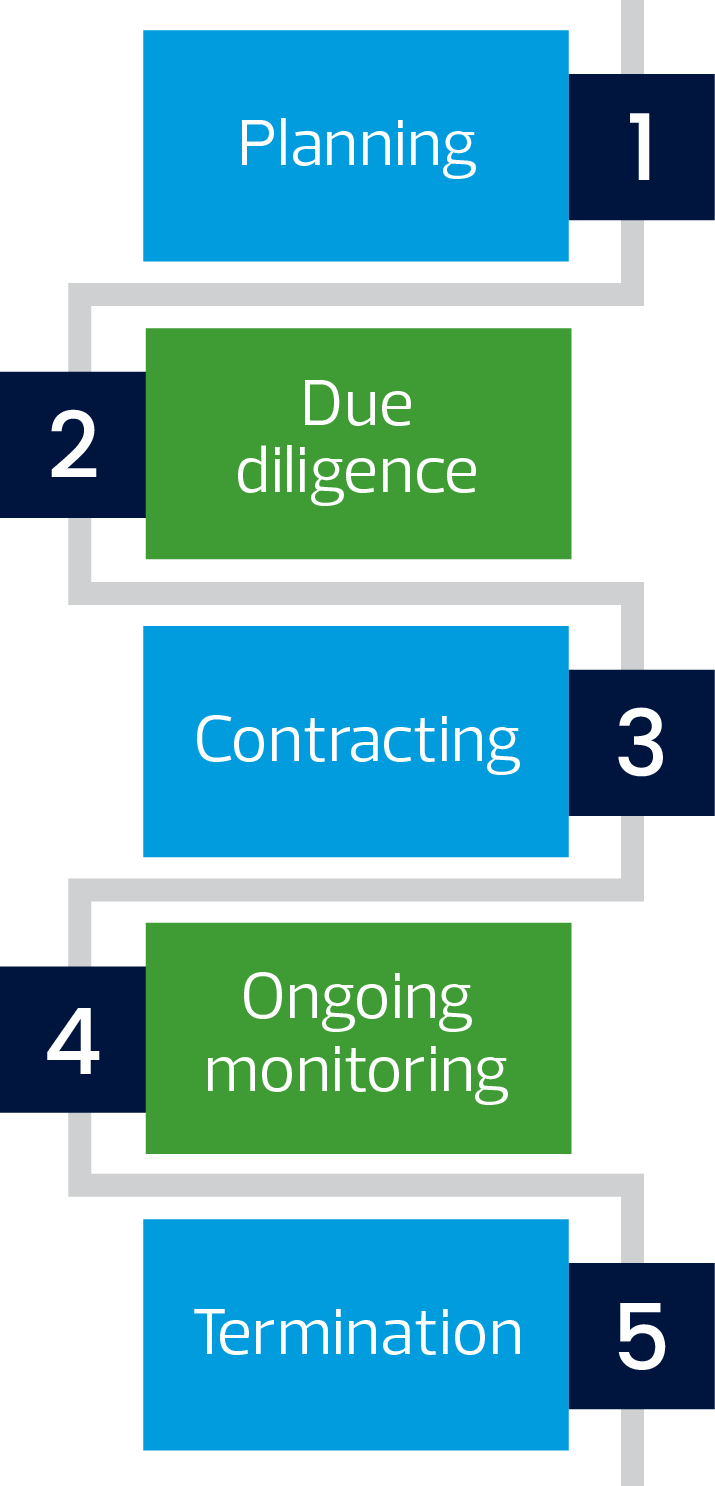Implementing an effective supplier risk management program is critical for CMMC compliance.
Key takeaways
A repeatable and scalable framework should focus on five phases of supplier risk management.
This process can better protect sensitive data, mitigate risks and maintain CMMC compliance.
CMMC and supplier risk management requirements
Maintaining a comprehensive supplier risk management program is a critical component of Cybersecurity Maturity Model Certification (CMMC) compliance. The CMMC framework is designed to protect controlled unclassified information (CUI) for businesses working with the U.S. Department of Defense (DOD). The supplier risk management program should confirm all contractors and vendors can meet the same level of controls to safeguard CUI. Understanding the flow of information within the CMMC boundary, and setting clear expectations and guardrails, enables organizations to effectively oversee, manage and mitigate potential risks from third parties.
The CMMC framework includes three levels, with each imposing progressively stricter scrutiny of cybersecurity practices and policies. The certification level required depends on the type of information an organization is handling. For instance, organizations managing CUI need higher levels of certification. The DOD stresses the importance of securing sensitive information, as any breach could harm national security, privacy or other government interests. Hence, organizations must ensure their cybersecurity measures are robust enough to safeguard this information.

Prime contractors, which contract directly with the federal government, must pass these requirements to their subcontractors, confirming coverage at all supply chain tiers. The government audits prime contractors and their supply chains, focusing on policies, procedures and controls to verify proper implementation.
Key phases of supplier risk management
Organizations should create a comprehensive supplier risk management program that aligns with the supplier lifecycle and considers risks across five key domains: planning, due diligence, contracting, ongoing monitoring and termination.
The planning phase lays the foundation of your supplier risk management program. This stage assesses business needs to identify the goods or services required from the supplier and identifies whether the supplier sits within your boundary where CUI is created, processed, stored or transmitted. It includes pinpointing inherent risks linked to the supplier to inform the level of due diligence needed, and understanding their importance and/or criticality to your organization. Understanding the supplier's role within your CUI environment is crucial for developing a solid supplier risk management framework and separating risk management practices for CUI and non-CUI operations, where possible.
The next vital stage is due diligence, when detailed risk assessments are conducted and crucial information about the supplier's control landscape is collected. This process may include sending questionnaires, obtaining third-party attestations such as System and Organization Controls 2 (SOC 2) Type II reports, and/or reviewing evidence that the supplier is maintaining alignment with CMMC requirements. The goal is to verify the supplier has effective cybersecurity controls that align with your organization's risk tolerance and CMMC level. Due diligence helps identify deficiencies needing resolution before contracting.
Following due diligence, the contracting phase integrates specific risk mitigation measures into the supplier agreement. This stage involves negotiating contract clauses to address identified risks, such as needing compensating controls or modifying service level agreements. This phase also gives you an opportunity to decide whether to proceed with the supplier based on their risk profile. Ensuring your legal team reviews and includes necessary procurement clauses in the contract is crucial for protecting your organization.

Ongoing monitoring is a process to confirm suppliers comply with agreed-upon controls and CMMC requirements. This phase involves performing regular evaluations and yearly reviews for high-risk vendors, as well as monitoring changes in the business arrangement. Leveraging technology can significantly boost monitoring efficiency by automating tasks such as sending reminders and updating records. Continual monitoring helps you promptly identify and address emerging risks.
The final stage, termination, ensures the supplier's access to your environment is properly revoked and any data or hardware is returned or destroyed per the contract. Implementing a solid termination checklist is vital for safeguarding your organization's information and maintaining compliance. This stage also includes reviewing the supplier's performance and documenting lessons learned to improve future risk management practices.
The takeaway
To achieve CMMC compliance, your organization needs a well-organized supplier risk management program. This involves understanding your CUI boundary and defining your supplier ecosystem within that boundary, completing proper risk management procedures, and ensuring adherence to cybersecurity controls and CMMC requirements for safeguarding CUI.
Following the five phases of supplier risk management—planning, due diligence, contracting, ongoing monitoring and termination—is critical for creating a repeatable and scalable framework. Implementing governance, considering the entire supplier ecosystem, aligning risk assessments with suitable frameworks and using relevant tools are also key components. Taking these steps can protect sensitive information, mitigate risks and maintain compliance with CMMC standards.
RSM contributors
-
 Amy FeldmanDirector, Risk Consulting
Amy FeldmanDirector, Risk Consulting -
 Kia SmithDirector
Kia SmithDirector

